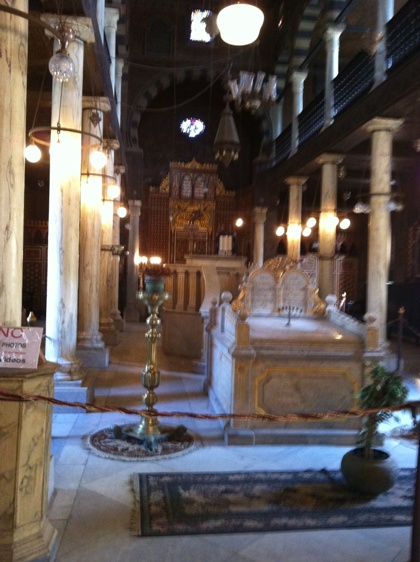Surprising the locals
When I walked into Cairo’s Ben Ezra Synagogue last Saturday afternoon, the groundskeeper, Hassan, was both surprised and excited. Now a museum, I was not the only person there. But it turns out I was the only one to kiss the mezuzah on the way inside. Hassan smiled and asked me, “Anta yehudi?” I smiled back and nodded. With his broken English and my shattered Arabic, Hassan apologized that he could not sell to me any souvenirs because “it is Shabbat,” but he then took it upon himself to briefly explain the city’s Jewish history. “There are now fifteen Jewish families living in Cairo,” he says, “though in 1948 there were 80,000 Jews here.” I listen politely but wonder if my historical timeline for Jews in Egypt runs further back than Hassan’s.
Outside and around the back, Hassan shows me a flat, round concrete slab that has been placed over what appears to be a well. It lies adjacent to what I am told once served as Ben Ezra’s mivkah, or ritual washing facility. Hassan tells me “the well marks the spot where baby Moses was sent down the river.” I am not sure if this is tourist urban legend or actual fact. But either way, I find myself shaken by the experience, and also proven wrong: it turns out Hassan’s timeline runs pretty far back.
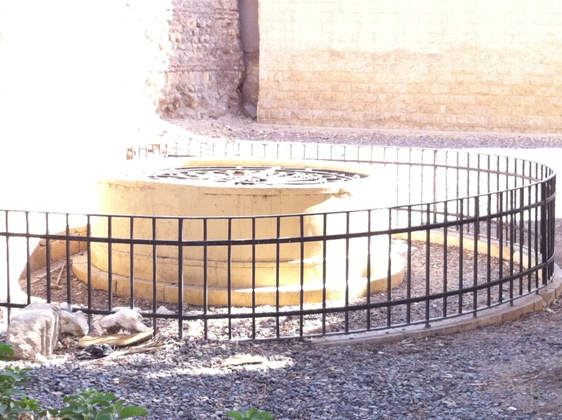
Same but different
Ben Ezra was not hard to find. Located in the old part of the Egyptian capital, English and Arabic signs point visitors in the right direction.
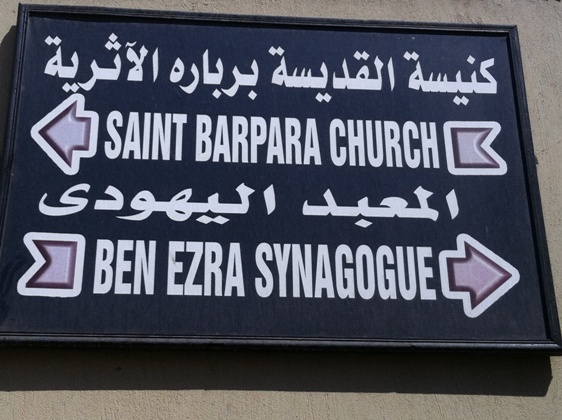
It sits among a number of worship houses. Nearly all of them are Coptic churches serving the country’s Orthodox faithful. But unlike the buildings adorned with a cross, the one – and only one – with a Star of David at its gate also had a metal detector below it.
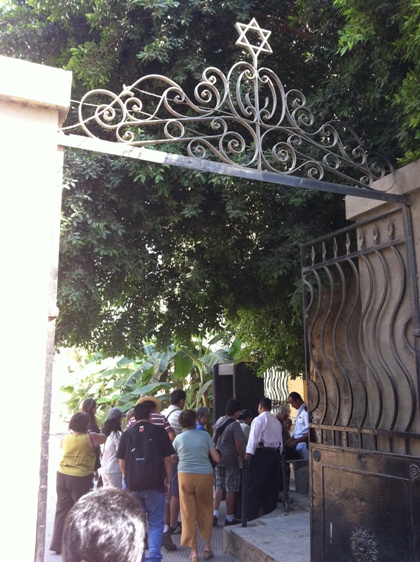
I leave and look for – and find – another synagogue called Shaar Hashamayim, or “Gates of Heaven.” It is located in the middle of downtown Cairo. Aside from the Star of David etched on its doors, the only thing that distinguishes it from the other large buildings on Adly Street is the security perimeter around its front, and the 24-hour police presence. This is the synagogue, I am told, that actually still holds Jewish prayer services, though by the time I arrive there is no one there other than the eight guards.
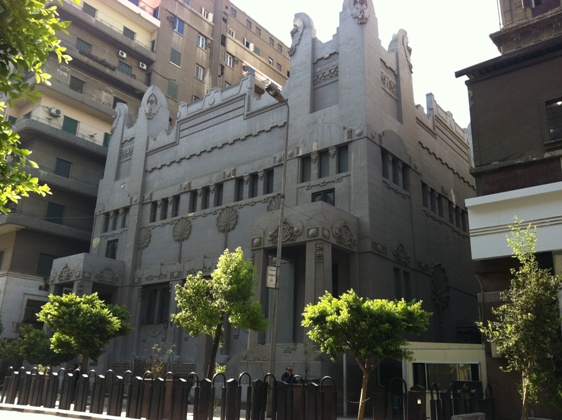
A paranoid government
Though Jewish practice in Egypt was outlawed in 1948 following the creation of the State of Israel, it is rarely enforced on the small numbers who still pray. And ironically, last year the government was instrumental in helping to fund the restoration of the Rav Moshe Synagogue, also known as the Maimonides Synagogue, named after the great Jewish scholar who is said to have spent much of his life there. I am told he even wrote a Torah scroll inside its walls. The synagogue’s premises are said to have special healing powers. They were used to help the highest among Egypt’s ailing nobles. But a grand re-opening of the facility exposed the government’s difficulty in supporting such an endeavor. One week after the Jewish community (and honored international guests) held their own celebration – a traditional simcha – an official government ceremony was cancelled amid media reports that “Jews were seen dancing and drink alcohol.” The Egyptian ministry charged with overseeing the renovation quietly distanced itself.
But the tide may be changing. A government poll released last month in the wake of the country’s political revolution (and amid Egyptian allegations of Israeli spying) revealed that a two-thirds majority of people think it is in Egypt’s interest to keep its peace treaty with Israel. This runs counter to the myths spread in much of the Western media that a post-Mubarak Egypt will quickly sever ties with its Zionist neighbor to the north.
At lunch, I pick up the English-language newspaper and read an article about insecurity in the Sinai. Earlier this year, Egyptian authorities, with Israel’s permission (in accordance with their peace treaty), deployed thousands of troops to the peninsula to combat criminal yet arguably autonomous Bedouin tribal groups. The article goes on to say that the Egyptian military-led interim government believes the groups are being supported by foreign networks, including Hezbollah and Hamas. It is the first time in my few days in Egypt that I come across those names.
The shifting consensus
I head for Tahrir Square, the central gathering point that witnessed the largest demonstrations earlier this year. In recent days the youth and families of those killed have returned, setting up tents and demanding justice. Their numbers are smaller but their voices are just loud. They split into groups and argue with anyone passing by. They call for inquires and trials for those among the establishment that called for a violation crackdown on the protesters. Amid the arguments, not a single group discusses Israel or Palestine. No one says Gaza or flotilla in any of their presentations. And not a single voice mentions the Muslim Brotherhood of Egypt.
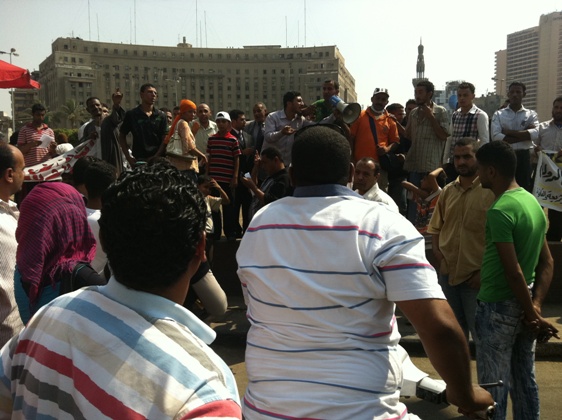
Along the side of the road, a number of vendors sell t-shirts commemorating Egypt’s recent uprising. Some bear the flag, others bear pictures of a crowded square. But nearly all display the date, the 11th of February, the date Mubarak officially stepped-down. It has not been long, but Egyptians love to remember. One needs a calendar to get to some places, like Nasser Metro, situated at the corner of the 11th of February and the 6th of October. The latter street name, of course, alludes to Egypt’s 1973 war with Israel. Not to be outdone, on the main road leading from the city center to the airport, cutting right through the posh neighborhood of Heliopolis, one finds the “October War Panorama.” Designed in part by North Korean artists, and looking as much, it commemorates “Egypt’s victory of Israel” in that year, while ignoring Israel’s successful counterattacks and an eventual UN-backed, mutually-agreed ceasefire.
Like beauty, history is in the eye of the beholder. Some will continue to associate the recent Jewish presence in Egypt with a war that left nearly 8,000 people dead. Others, like Hassan, will chose to remember the ancient presence as a part of their modern country. And some, like the government, will try to walk the balance between the two approaches.
——–
UPDATE: 9/July/2011: “Though Jewish practice in Egypt was outlawed in 1948 following the creation of the State of Israel, it is rarely enforced on the small numbers who still pray.” This may be incorrect. It was based on information given to me by two local sources in Cairo. If someone has either English or Arabic sourcing on this, please advise! Thank you.)

